THEME SESSION Fisheries and resource circulation
Creating new marine businesses
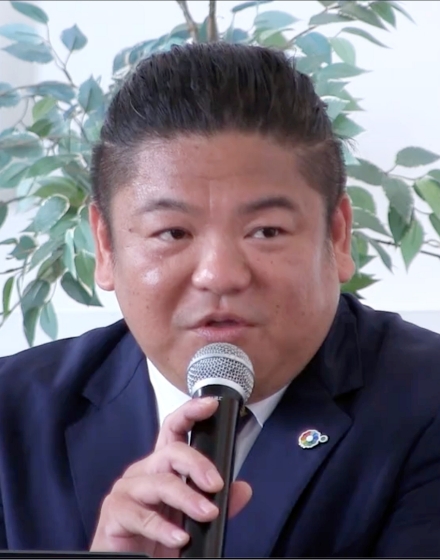
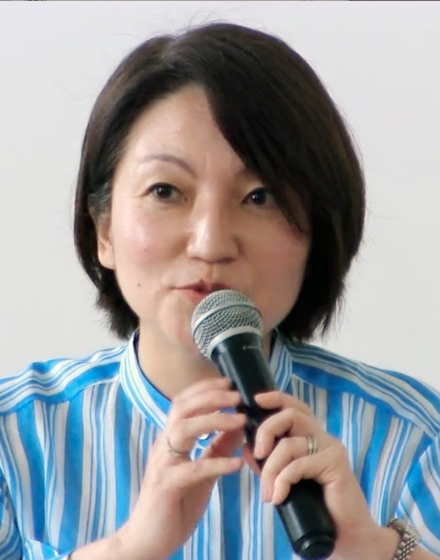
Hitotsubashi University
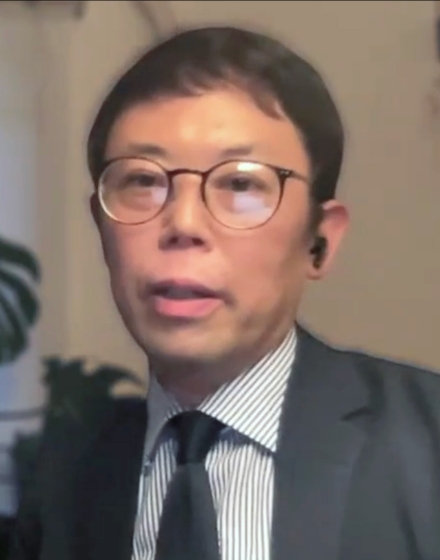
The session on fishery resources and resource circulation began with moderator Kaori Fujita outlining the relationship between the international community and fishery resources. “It is important to contribute to achieving a sustainable fisheries industry by utilizing data collected from Japan’s advanced environmental DNA monitoring network and other sources,” asserted Fujita. It is vital to understand entire supply chains and social risks, she explained. “As a major fisheries market, Japan should encourage the world to establish the necessary means and financial mechanisms to address challenges such as overfishing, IUU fishing and human rights protection.”
About 40% of fishery stocks classified as overfished
Next, Wakao Hanaoka, who chaired the Fisheries Resources Subcommittee, warned of the critical state of fishery resources worldwide, stating, “Approximately 40% of the world's fishery stocks are classified as overfished, with some 50% maximally sustainably fished, raising concerns about worsening food crises and hunger.”
Given Japan’s core position in the global seafood supply chain, Hanaoka added, “There’s a real need to develop models that give players with strong buying power an incentive to promote domestic and foreign production and supply chain reforms.”
He presented the following recommendations for the Japanese government: (1) build an observation system; (2) make regulatory reforms and provide financial support; (3) develop a mechanism for financing the fisheries industry; and (4) take stronger measures to combat ecosystem destruction and IUU fishing in cooperation with other market countries. Hanaoka also pointed out the importance of shaping a market in which a higher proportion of fishery stocks within biologically sustainable levels is procured with consideration for the environment and human rights, to reduce the burden on nature and society. “It is essential to create a new kind of marine business that makes a clear break with outdated fishing practices,” he stressed.
Commenting on the recommendations, Masanobu Ishikawa, who chaired the Resource Circulation Subcommittee, said, “Japan will pursue partnerships with island nations, developing countries and coastal countries to support measures to tackle marine plastic pollution at the source and lead debate on building an international framework for measures to combat waste that washes ashore. As a maritime country facing the Pacific Ocean, we need to take a strong stance on these issues.”
Contributing with technology transfers
Ishikawa explained the country’s response to recycling, noting, “In 2000, Japan set up a national framework for recycling policy, becoming a world leader in promoting a circular economy. It achieved the highest rate of PET bottle recycling in the world, overtaking the United States and the European Union.” He highlighted the significance of the Japan-style model, saying, “Our 50-year experience of hard work to transform Japan into an advanced recycling society can serve as a reference for other countries. Japan’s technology and expertise can be shared with the international community to benefit the world.”
It has been predicted that by 2050, the oceans will contain more plastic and other debris than fish. Yoko Maki added, “About 80% of plastic and other marine debris originates from land, flowing out to sea through rivers. It’s therefore important for local governments and businesses to take action.” As a solution, she stressed the need to build an advanced recycling society by utilizing terrestrial resources more efficiently and making effective use of IoT, AI and other digital technologies.
Maki added, “Japan has made a lot of advances in waste sorting, but not enough in material recycling. Currently, we are seeing progress in switching to plastic alternatives, such as paper, wood and biodegradable plastics, but this process needs to be accelerated.” On achieving a sustainable food system, she said, “We must be careful not to deplete marine resources, trying to limit ourselves to seafood caught in properly managed fisheries.”
Touching on the importance of using scientific knowledge to manage fisheries, Michio Kondoh said, “Fishery resources become more stable through the skillful use of diverse species. The small-scale, multi-species fisheries typical of the Asian monsoon region represent a sustainable strategy that is in line with the times.”
Kondoh also asserted that “environmental DNA, which makes it possible to identify the type and distribution of wildlife species from invisible traces of marine life, is an innovative tool for more scientifically based decision-making.” Touching on Japan’s first international monitoring network, ANEMONE Global, which is currently under development, he contended that “science-based collaboration is the key to overcoming challenges such as climate change and biodiversity.”
Kondoh added, “The main pillar of the Fishery Resources Subcommittee’s recommendations is the need to link new scientific knowledge and accumulated experience from the field and convert them into real-world implementations.”
Eager to revive seaweed
The last speaker to take the stage, Yusuke Saraya, explained his company’s freezing and processing technology. “We have a system in place to deliver locally processed, high-quality fish and shellfish to the place of consumption based on flash-freezing. Technology like this helps us to utilize fishery resources more effectively.” He also explained a technology for processing plastics that wash up on remote islands. “In the Tsushima region in Nagasaki Prefecture, debris that washes ashore is compacted and concentrated by machine and transported off the islands, adding value to the local economy. As we increase the precision of this technology, we want to expand its use to other island areas.”
Saraya also expressed enthusiasm for the revival of seaweed cultivation. “Kelp production in Hokkaido is declining, so we want to learn cultivation techniques for using kelp as a food and health resource.” To emphasize the importance of recycling marine resources, he added, “Since seaweed also provides an effective environment for fish to grow in, it has the potential to contribute to fishery resources.”
*The remarks of Kondoh were made in a video message. The remarks of Ishikawa were submitted in advance in writing.
Alarm bells over delay in tackling ocean waste
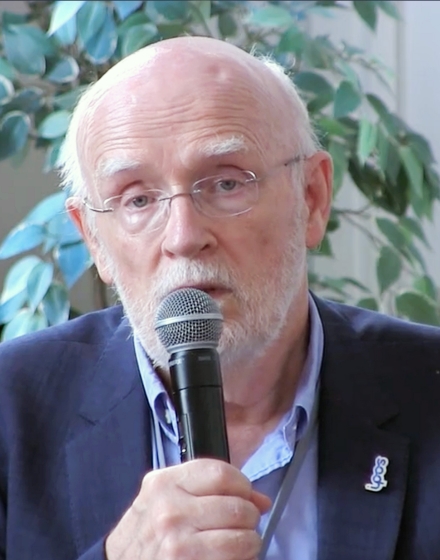
Intergovernmental Panel on Climate Change
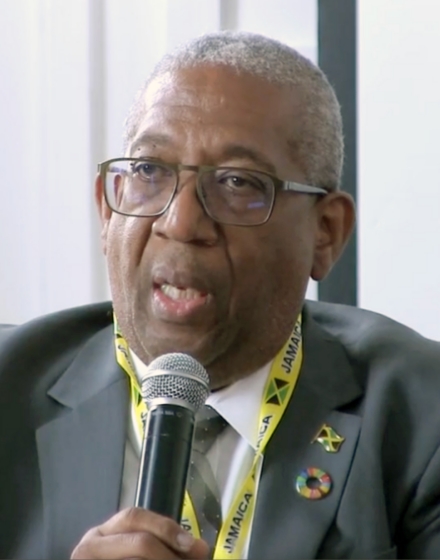
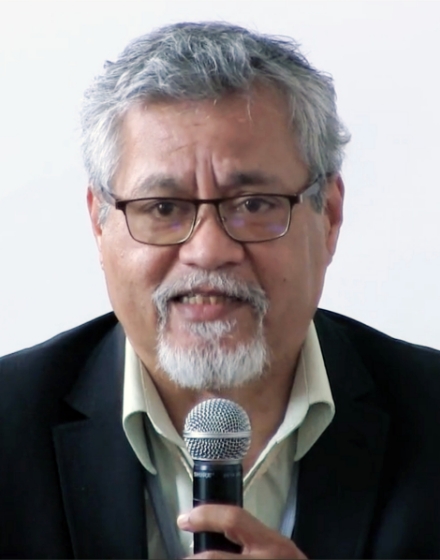
Marshall Islands Marine Resources Authority
Along with government officials from island nations, scientists discussed issues and prospects for international cooperation and policies relating to the conservation of marine resources and environments.
Glen Joseph explained that livelihoods, culture and economic development in the Marshall Islands are dependent on marine resources. “We have many diplomatic partners. We work with Japanese fishery cooperatives on fuel prices and other matters, so we are now able to secure additional income from fishing to supplement our established coconut exports.” On further collaborations with Japan, he mentioned that he is aware of efforts to balance large-scale longline fishing with local fishing and the need to improve market access.
Dale Webber offered a historical overview of Jamaica’s active involvement in international ocean management under the UN Convention on the Law of the Sea. “We established regulations and systems to deal with IUU fishing, and with Japanese support, we purchased vessels to use for fishery management.” He also explained multifaceted strategies aimed at balancing sustainability and economic development, including marine remote sensing, AI-based ocean management and human resource development at the Caribbean Marine University. Finally, Webber stressed the importance of taking a comprehensive approach to the issue of marine debris, saying, “We need policies that address the original source of waste.”
Sounding the alarm about the current delay in taking action to address the worsening climate crisis, Hans-Otto Pörtner stated, “We must constantly ask ourselves what we are doing to prevent marine plastic pollution and whether that is enough. The scientific community keeps asking us what needs to be done, but policies are put off because short-term economic gain takes priority.” He insists that we need to base all economic development and use of natural resources on the principle of sustainability.
THEME SESSION Climate change, finance and regional revitalization
The ocean is a sink for CO2
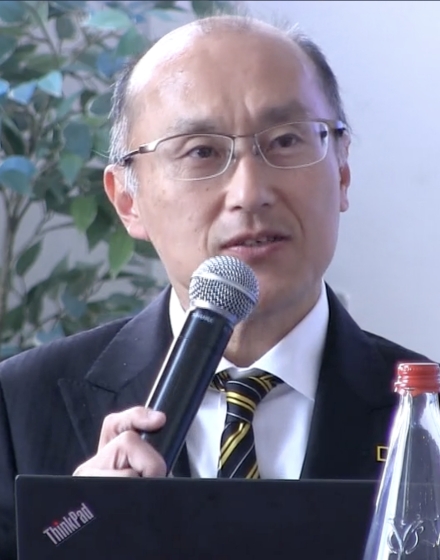
Nikkei National Geographic
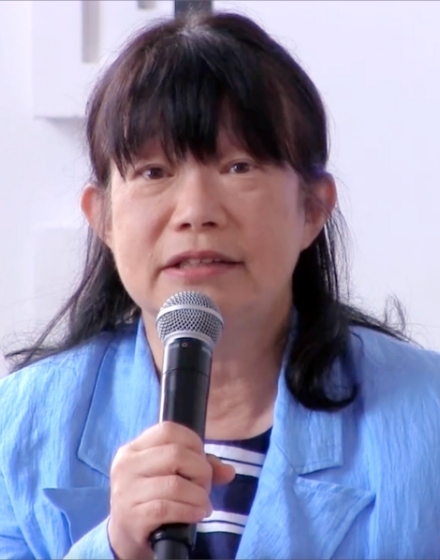
Graduate School of Kyushu University
Monitor Deloitte, Deloitte Tohmatsu Group
Global Markets Division, BNP Paribas Securities
Members of the Climate Change, Finance, and Regional Revitalization Subcommittee, chaired by Kenji Toda, discussed the background and aims of the proposals for the development of a “blue economy” model.
Conserving traditional knowledge
The opening session was led by Satoquo Seino, chair of the Regional Revitalization Subcommittee, which has explored how people living in coastal areas have coexisted with the sea. For example, since ancient times, people living along the Tsushima Current have made use of the current to travel back and forth, crossing national borders and exchanging and accumulating various kinds of useful knowledge.
Seino explained that “the preservation of algae in stone ‘algae huts’ on Tsushima Island in Nagasaki Prefecture and the traditional processing method of agar on the Goto Islands are good examples of such knowledge.” She asserted that the challenge now is how to pass on such empirical knowledge to future generations.
On the other hand, one serious challenge in coastal areas is the proliferation of marine debris. While this is a very unfortunate problem, it has served to spark interest in the ocean among people who had little connection to it. “I hope that more people take this opportunity to think about the history and future of the sea,” said Seino. Through these proposals, she wants to involve more people in discussions and initiatives about the ocean.
Saraya expressed concern about the fact that local culture, food and clothing are being lost as more mass-produced products are distributed nationwide. “We need a renewed appreciation for the value of marine and agricultural products that have roots in local culture, to restore the individuality and charm of different regions.”
Saraya added, “A marketing viewpoint is needed to evaluate the individuality and appeal of a region, but this is difficult when the region is closed. The key to regional development is to develop businesses that link the local to the global, to build a sustainable economic foundation for the region.”
Revenues to fund innovation
Yoshikazu Takayanagi, chair of the Climate Change Subcommittee, pointed out that the ocean is vital for a wide variety of industries. At the same time, he added, “Like forests on land, it is an important sink for carbon dioxide (blue carbon). This fact should refresh our appreciation of the ocean’s importance from a climate change perspective.”
As an example, international shipping accounts for 2.5% of the world’s CO2 emissions, which is more than those of the entire country of Germany. This makes decarbonization extremely important. “As a major shipping power, Japan needs to set up an international framework and design a system,” he suggested.
Takayanagi also touched on the growing efforts to promote blue carbon in various regions of Japan. He argued, “We should sell blue carbon in the form of carbon credits, using the revenue to fund further blue carbon creation. Like this, we can simultaneously promote regional revitalization, fisheries and biodiversity conservation.”
Finance Resources Subcommittee chair Mana Nakazora, confidently stated, “There is no doubt that the blue economy will continue to expand in the future. It is important for all actors to mobilize and accelerate action. All countries need to work together to make SDG14 a reality.”
Financial involvement is key
According to Nakazora, the key to expanding the blue economy lies in the involvement of the financial sector. “Rating agencies, investors, etc., need to take a big-picture view of the entire blue economy, identify initiatives that should be supported and encourage investment,” she explained. The subcommittee suggests that Japan establish a financing scheme as soon as possible, with the goal of building a ¥50-trillion market by 2030. “We expect that getting finance for projects dotted around Japan will lead to lines joining the dots, and eventually the filling of lines into areas.”
Finance and HR for island nations and regions
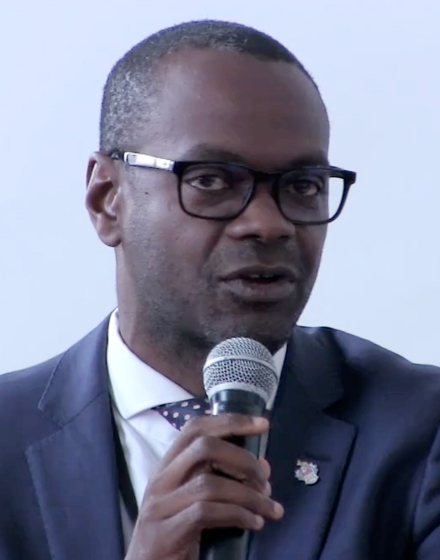
The University of the West Indies (Five Islands Campus)
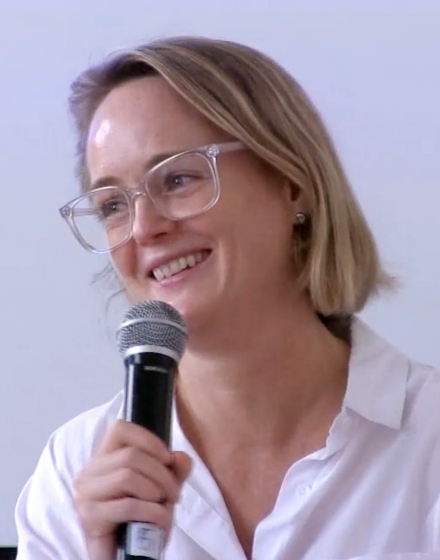
Bezos Earth Fund
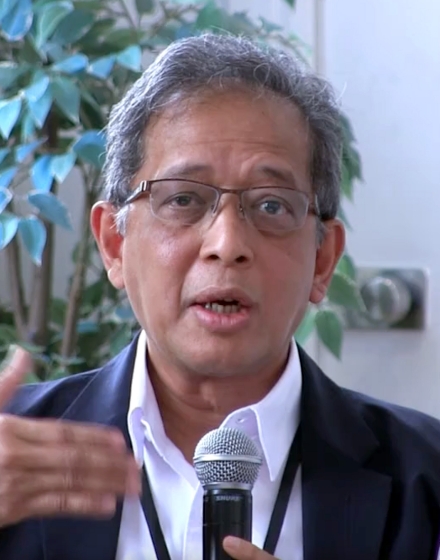
Bogor Agricultural University
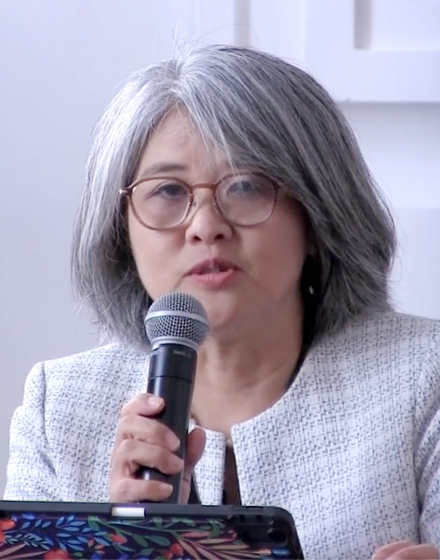
Asian Development Bank
In the session on climate, finance and regional revitalization, some prominent international figures from the world of “blue finance” made comments.
Nicola Thomson spoke of the Unlocking Blue Pacific Prosperity (UBPP) concept announced at the 28th Conference of the Parties (COP28) to the UN Framework Convention on Climate Change (UNFCCC) held in 2023. The concept, proposed by the leaders of Pacific island countries, has three goals: 100% effective sustainable ocean management; healthy, productive people; and fit-for-purpose financing. The ability of private organizations to deliver funding is another feature of the concept. “The Bezos Earth Fund has committed $100 million to the project, so we are very interested in making it work,” said Thomson.
Yoko Watanabe explained that the basic stance of the Asian Development Bank (ADB) is to promote regional development by making use of the inherent value of nature. She reported that the ADB has issued $300 million worth of “blue bonds” to invest in ocean conservation. This money is being used to address declining fishery resources and upgrade coastal management in Cambodia, as well as for projects to reduce marine debris in Indonesia and the Philippines. Calling for cooperation from the countries involved, she added, “For the financial mechanism to function effectively, it is vital to put in place policy support and legislation in each country.”
Branson Belle described a distressing situation in the island countries of the West Indies, where less than 20% of the population accesses tertiary education, and 65% of the tertiary educated migrate to North America or Europe. On the other hand, he points out, “The exclusive economic zones (EEZs) of the West Indies region amount to a vast area of 110,000 km2. So, considering the economic development of the region, we cannot afford not to make use of the ocean.” He lamented that the outflow of human resources prevented this potential from being harnessed. Belle added, “For developing the region, building up skills through vocational training and pursuing a blue economy is absolutely vital.”
Luky Adrianto stressed the importance of implementing the blue economy regionally. He cited three specific initiatives for doing this. The first is the pursuit of sustainable trade that includes the blue economy. The second is research on climate change mitigation that makes use of the oceans. (He and his colleagues are working on this jointly with Monash University in Australia.) The third is the pursuit of viable climate change policies for island nations. “It is important to build and deploy local models that can be implemented through industry-government-academia collaborations,” said Adrianto.
Aiming for zero-emission ships
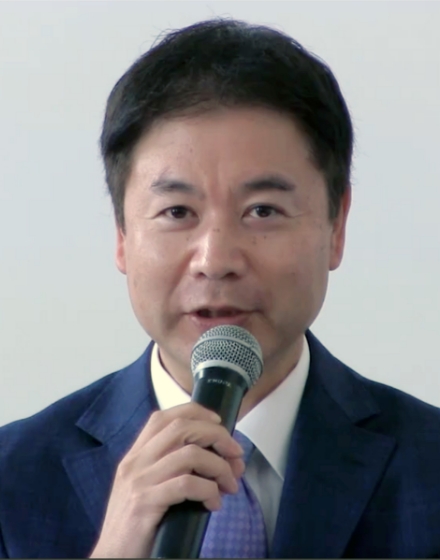
Mitsui O.S.K. Lines
International shipping is a vital infrastructure that accounts for 90% of total global trade. It is the foundation that sustains the economic life of all countries. At the same time, the CO2 emissions of ships during operation make up around 2% of total global emissions. These emissions need to be urgently reduced to address climate change. Mitsui O.S.K. Lines (MOL) is aiming to cut emissions intensity (emissions per metric ton per nautical mile [approximately 1.8 km]) of transported cargo by 45% by 2035 (relative to the 2019 level), with the goal of achieving net zero emissions of all shipping by 2050. This will be achieved mainly through operational efficiency and conversion to decarbonized energy.
A concrete example of more efficient operation is the installation of the “Wind Challenger” wind-assisted propulsion system on ships. This system senses wind direction and speed in real time and automatically controls the rotation and extension of the ship’s sails. Maximizing the use of natural winds can typically reduce fuel consumption by 5 to 8%.
MOL is also converting its ships to cleaner fuels, such as liquefied natural gas (LNG) and methanol, two currently available low-carbon fuels. However, these are still fossil fuels that generate CO2. As soon as possible, it wants to switch to biofuels and synthetic fuels derived from renewable energy. It plans to eventually use zero-emission ships powered by ammonia and/or hydrogen, which have no CO2 emissions.
MOL is also working to establish a supply system for zero-emission fuels. The widespread adoption of ammonia, a next-generation fuel, requires various technologies and expertise, from production, storage and supply, to shipping and use. It plans to leverage all the knowledge it has cultivated in LNG bunkering (supplying fuel to ships) to help in the construction of a supply network.
MOL will also be helping to reduce the Scope 3 emissions – emissions by its clients by providing them with digital certificates of decarbonization.
Restoring seaweed beds with financial power
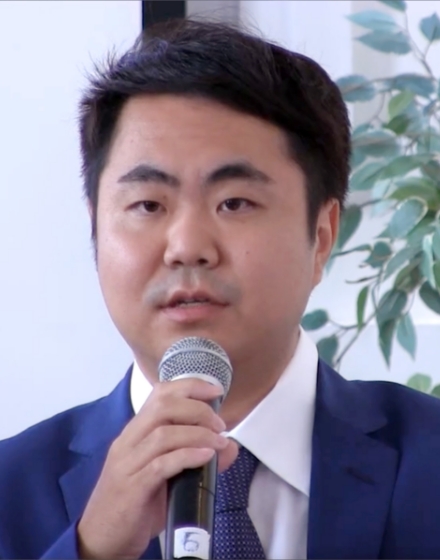
Project Division
Shikoku Branch
Development Bank of Japan
Natural seaweed beds are declining in many places due to the impacts of ocean water pollution, gravel collection from the seabed, and rising water temperatures due to global warming. Seaweed beds are important as a supporting foundation for marine ecosystems, so their disappearance results in reduced catches. This trend is giving rise to a sense of crisis among fishermen.
To tackle this issue, Kagawa University has commenced research on artificial seaweed bed creation. The goal is to regenerate seaweed beds in the Seto Inland Sea both for biodiversity conservation and to revive marine industries. The restoration of seaweed beds throughout Japan's territorial waters will require financial resources, however.
The Development Bank of Japan (DBJ) has identified “regional revitalization using hidden potential” as a key management challenge. The bank has decided that the creation of artificial seaweed beds in the Seto Inland Sea fits this purpose. It is providing financial support to implement this project.
To make seaweed bed creation sustainable, a mechanism of financial circulation is indispensable. Such a mechanism must attract funds from nature-positive companies, local governments, and financial institutions, and enable all stakeholders to enjoy profits and benefits. By expanding this mechanism to other regions, the creation of seaweed beds can be implemented in a wide range of coastal areas. The broader aim is the revival of marine industries.
The DBJ also envisions blue carbon credits, for selling the CO2 absorbed by reclaimed seaweed beds as credits. However, the credits must be valuable enough to promote investment by companies and other players. This requires the visualization of environmental value and the collection of data as a basis for this. It is also important that data collection and disclosure are consistent with international standards, such as the Task Force on Nature-related Financial Disclosures (TNFD), rather than any proprietary standard.